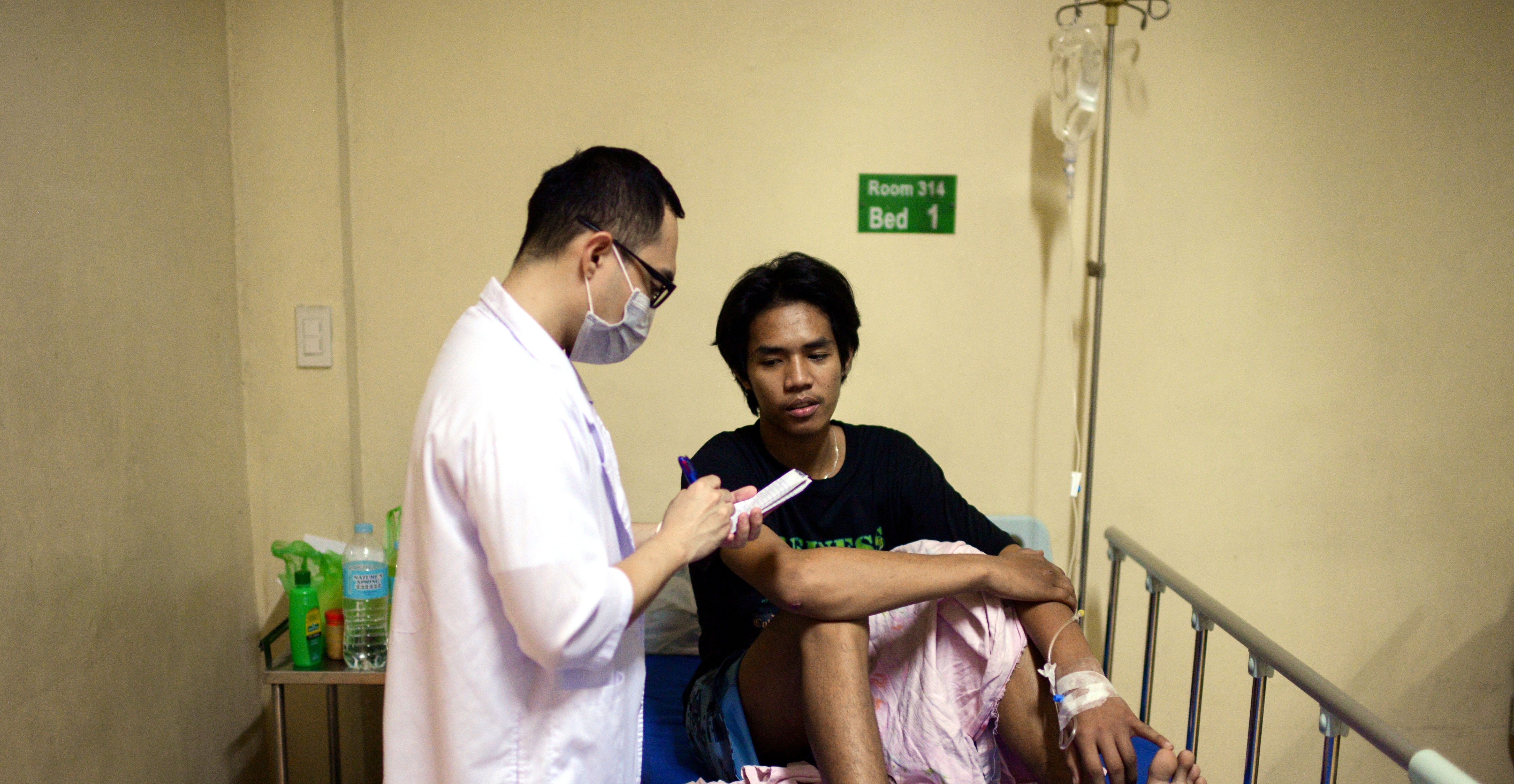Here are 3 ways to close digital gaps and kickstart recovery

Digitalization for everyone is essential for recovery. Image: REUTERS/Temilade Adelaja
- Governments must develop holistic national digital strategies across industry sectors to connect the unconnected.
- Portions of COVID-19 stimulus packages should be allocated toward the digitalization of education, healthcare and key industries.
- The rapid digitalization of SME’s must be prioritized as key growth drivers of national economies.
Have you read?
COVID-19 has achieved in weeks what would have taken years for digital adoption. But it has also exposed gaps and has given a newfound sense of urgency to the digital inclusion agenda.
Back in April, a number of governments joined the joint World Economic Forum, World Bank, ITU GSMA Call for Action, which outlined a number of immediate and short-term measures to make affordable and better use of digital technologies and connectivity for citizens, governments and businesses during global lockdowns.
These short-term measures have been important stepping stones, but they are not enough to bridge the digital divide in the longer-term. It will take significant capital investment and comprehensive planning, with an injection of government funding, to support the drastic increase in internet usage (it was a 70% rise at the height of the crisis), as countries move forward to define the new normal.
The post-COVID-19 world is without doubt a more digital world. This shift risks exacerbating current inequities in access, affordability and capacity as societies make the transition. To address this, the Forum established the Essential Digital Infrastructure and Services Network (EDISON) Initiative. This public-private cross-sector community developed a strategic playbook to lay out a set of medium- to long-term measures to accelerate digital development and present unforeseen growth opportunities. Key recommendations can be found in the Playbook, Accelerating Digital Inclusion in the New Normal, which was developed in collaboration with Boston Consulting Group.
3 priorities for addressing connectivity demand
Demand for connectivity services has never been greater, yet lack of access, means, and/or skills to participate in the digital economy is widespread.
The challenge is not new. In recent years, many initiatives have been created to address the different barriers and gaps. As a result of these efforts, along with advances in technologies and substantial industry investment, the situation has improved compared to five years ago. But now, more than ever, connectivity should be at the core of all national and international priorities – covering healthcare, education, government services and beyond.
1. Business
A new dimension to the digital divide has emerged since the onset of the crisis. Small and medium size business (SMEs) represent up to 90% of businesses worldwide and half of global employment (the figure is even higher in emerging markets). Smaller businesses already lag far behind with digital technology adoption and have shown to be dramatically exposed to global shocks as a result. At the start of the pandemic, businesses were thrust into digitalizing their operations and many SMEs in particular, were left vulnerable due to a lack of capacity or know-how.
The solid digital infrastructure built over the last 20 years has facilitated the continuation of key activities, allowing an estimated 10% of the global labour force to work remotely, supporting close to 300 million jobs. This translates to an annual impact of $8 trillion, or twice the size of Germany’s economy.
Have you read?
2. Education
A similar number of school-aged kids and university/higher education students – roughly 100 million and 200 million respectively, have also been able to maintain access to education remotely. While this represents 15-30% of the global student population, it is weighted towards developed economies.
Digitalizing schools has become critical to the education of future generations. As no country in the world can at this stage confirm that schools will re-open in September, education systems are increasingly moving to a new hybrid approach, which will be necessary to educate the more than 1 billion students out of classrooms worldwide.
3. Health
Connectivity also has a significant impact on managing health-related issues during the crisis. Technology was used for pandemic planning, surveillance, testing, contact-tracing, quarantine and remote healthcare. Telemedicine consultations grew more in one month than in 10 years,[i] which played a key role in keeping lines down at hospitals and addressing other illnesses.
COVID-19 has laid bare how health and healthcare are critical for national security and many governments acknowledge this and are allocating specific resources. In the US, the Federal Communications Commission approved more than $100 million COVID-19 applications for connectivity projects in the immediate and short-term. Additionally, it finalized a long-term programme allocating a separate $100 million from Universal Service Fund (USF) to cover the costs of providing connected care services by healthcare providers and to be used for other telehealth programmes.
3 strategies to accelerate economic recovery via digital inclusion
Public-private cooperation is essential to addressing the digital inclusion agenda post COVID-19. There is broad recognition by government leaders that in order to accelerate recovery, connectivity will need to be at the core of all other priorities.
Here are 3 strategies to achieve the right digital transition for a fast, equitable recovery:
1. Define and implement national digital strategies holistically across all sectors and disburse unused universal service funds to stimulate digital investment in underserved regions.
2. Earmark a portion of the recovery packages to fund infrastructure investment in underserved areas and the digitalization of other sectors, such as education, healthcare, and financial services.
3. Facilitate digitalization of SMEs via end-to-end offerings, as SMEs are key drivers of growth.
The Accelerating Digital Inclusion in the New Normal playbook will form the basis for ongoing efforts between the public and private sectors to accelerate internet adoption globally.
Don't miss any update on this topic
Create a free account and access your personalized content collection with our latest publications and analyses.
License and Republishing
World Economic Forum articles may be republished in accordance with the Creative Commons Attribution-NonCommercial-NoDerivatives 4.0 International Public License, and in accordance with our Terms of Use.
The views expressed in this article are those of the author alone and not the World Economic Forum.
Stay up to date:
The Great Reset
Forum Stories newsletter
Bringing you weekly curated insights and analysis on the global issues that matter.
More on Health and Healthcare SystemsSee all
Mille Sofie Stenmarck Korsgaard and Daniel Holth Larsen
November 20, 2025







